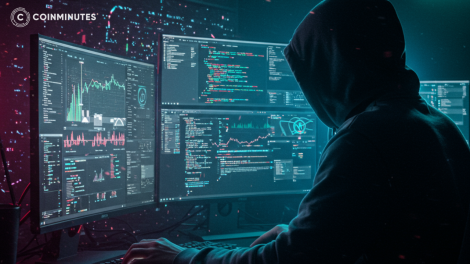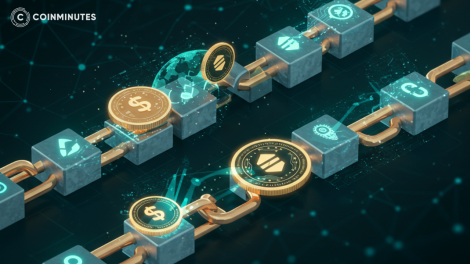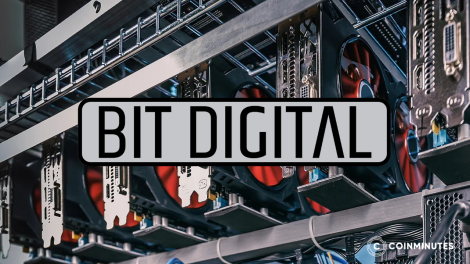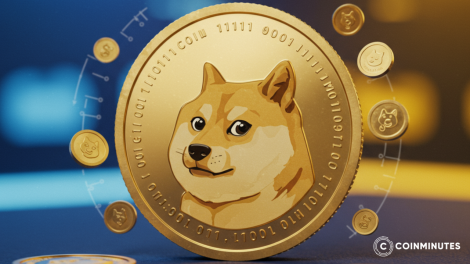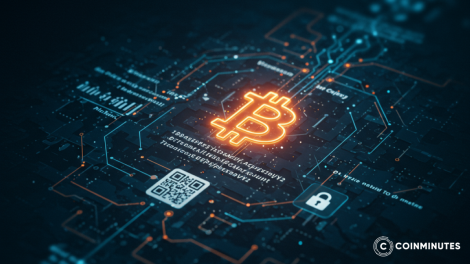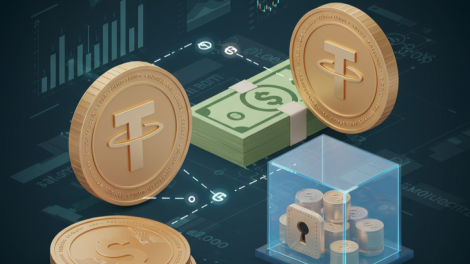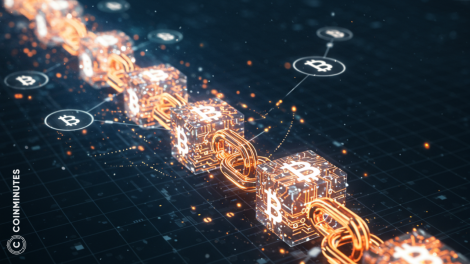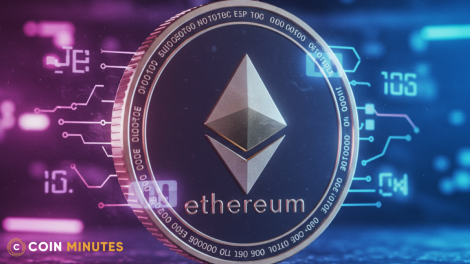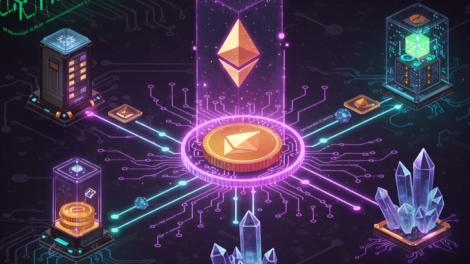What is a Token? Understanding How It is Created and How It Differs from Coin

The crypto world loves its jargon. It’s a mess of acronyms and technical terms that can make your head spin. One of the first and most fundamental points of confusion is the difference between a "coin" and a "token." You hear them used interchangeably, but they are different beasts. A coin is the king of its own castle. A token is a resident living in that castle, playing by the king’s rules. Understanding this difference is the first step to making any sense of the thousands of digital assets floating around out there. CoinMinutes will help you out on this one.
What is a Token?
A crypto token is a digital asset that is issued by a project and built on top of another project's blockchain. It doesn't have its own native blockchain. Instead, it leverages the infrastructure of an existing, established blockchain platform like Ethereum, Solana, or the BNB Smart Chain.
Think of it this way:
-
A blockchain platform like Ethereum is like a computer's operating system (like Windows or macOS). It provides the fundamental security, the network, and the rules for how things run.
-
A coin like Ether (ETH) is the native currency of that operating system. You need it to pay for all the operations, the "gas" that makes the machine run.
-
A token is like an application or a program you install on that operating system (like Microsoft Word or Adobe Photoshop). It runs on the OS, uses its resources, and follows its rules, but it serves its own specific purpose.
These tokens are created and managed by smart contracts, which are essentially self-executing programs that live on the blockchain. Because they don't have to build and secure their own blockchain from scratch—an incredibly difficult and expensive task—developers can create and launch new tokens relatively easily. This has led to a Cambrian explosion of tokens, representing everything from a share in a project, to a vote in a decentralized organization, to a ticket for a concert, to the ownership of a piece of digital art. A token is a programmable digital representation of value or access, living as a guest on a host blockchain.
How are Token Created?
Tokens aren't mined into existence in the same way that coins like Bitcoin are. They are "minted" or "issued." They are born from code. The creation of a token is a deliberate act by a project developer, governed by the rules laid out in a smart contract. The process has become surprisingly standardized and accessible, which is why there are millions of different tokens out there.
The Role of Smart Contracts
The smart contract is the heart and soul of a token. A smart contract is a piece of code deployed on a blockchain like Ethereum. This code defines everything about the token:
-
Its name (e.g., Uniswap).
-
Its symbol (e.g., UNI).
-
Its total supply (e.g., 1 billion UNI).
-
The rules for how it can be transferred, spent, and created.

For example, the smart contract for a token will have functions like transfer(recipient, amount), which allows a user to send tokens to another address, and balanceOf(address), which allows anyone to check the token balance of a specific address. The smart contract acts as a self-contained, automated ledger for that specific token, all while running on the secure, decentralized infrastructure of the host blockchain.
Token Standards Explained
To prevent chaos, blockchain platforms have developed "token standards." A token standard is a common set of rules and functions that a token's smart contract must follow. This ensures that all tokens of that standard are compatible with each other and with the broader ecosystem of wallets, exchanges, and dApps on that chain.
The most famous and widely adopted token standard is ERC-20 on the Ethereum blockchain. It defines a basic set of functions that every ERC-20 token must implement. Because they all speak the same "language," a wallet like MetaMask can manage thousands of different ERC-20 tokens, and a decentralized exchange like Uniswap can allow users to trade any ERC-20 token for any other. Other blockchains have their own standards, like BEP-20 on the BNB Smart Chain or SPL on Solana. These standards are what allow a vibrant ecosystem of different tokens to flourish on a single platform.
The Process of Token Creation
Thanks to token standards, creating a basic token has become quite simple for a developer.
- Choose a Blockchain: The first step is to decide which smart contract platform to build on (e.g., Ethereum, Solana, Polygon).
- Define Token Properties: The developer decides on the key parameters: the name, the symbol, the total supply, and the number of decimal places.
- Write or Use a Template for the Smart Contract: The developer writes the smart contract code that implements the chosen token standard (like ERC-20). Often, they will use a well-audited template from a source like OpenZeppelin to ensure security.
- Deploy the Smart Contract: Using some of the platform's native currency (like ETH) to pay the transaction fee, the developer "deploys" the smart contract to the blockchain.
- Minting: Once the contract is live, the entire supply of the token is typically created and assigned to the developer's address, as specified in the contract. The developer can then begin distributing the token through sales, airdrops, or by providing liquidity on a decentralized exchange.
Tokenization
This simple process of creating a token has given rise to a much bigger idea: tokenization. Tokenization is the process of converting the rights to an asset into a digital token on a blockchain. This asset can be almost anything, real or digital.
-
Real-world Assets: You could tokenize a piece of real estate, where one token represents a small share of ownership in a building. You could tokenize a bar of gold, a classic car, or a share of stock in a company.
-
Digital Assets: You can tokenize access to a service, a vote in a community, an in-game item, or a piece of digital art (this is what an NFT is).
Tokenization has the potential to make many illiquid assets more easily transferable and divisible, opening up new markets and investment opportunities. It’s the grand vision of representing all forms of value as programmable assets on a shared ledger.
Token v.s. Coin: The Key Differences
People get this wrong all the time. They see something on a crypto price tracker like CoinMinutes and call it a "coin," when it’s really a "token." Or vice-versa. While they are both digital assets, their fundamental structure and purpose are different. Getting this right is key to understanding the architecture of the crypto world.
Blockchain Structure and Native Assets
This is the most important technical distinction.
-
Coins: A coin is the native asset of its own independent blockchain. It is the currency that is built directly into the protocol of that blockchain. The transactions of a coin are validated and secured by that blockchain's own network of miners or validators.
Bitcoin (BTC) runs on the Bitcoin blockchain. Ether (ETH) runs on the Ethereum blockchain. Solana (SOL) runs on the Solana blockchain. You need these native coins to pay the transaction fees ("gas") on their respective networks. BTC is used to pay Bitcoin miners. ETH is used to pay Ethereum validators. They are the fundamental economic resource of their chains.
-
Tokens: A token does not have its own blockchain. It is built on top of an existing smart contract platform. It is a guest, a tenant living on someone else's property. Its transactions are processed and secured by the validators or miners of the host blockchain.
Shiba Inu (SHIB), Chainlink (LINK), and Uniswap (UNI) are all ERC-20 tokens that run on the Ethereum blockchain. When you send SHIB to someone, you are executing a transaction on the Ethereum network, and you must pay the transaction fee in ETH, not in SHIB. The Ethereum validators are the ones who process and secure your SHIB transaction.
Here’s a simple table to break it down:

Use Cases and Ecosystem Roles
Their different structures lead to different roles in the ecosystem.
-
Coins: The primary use case of a coin is to act as money or a store of value within its own ecosystem. It’s also the resource needed to pay for computation and security on its network. They are a means to an end—the end being the secure operation of the blockchain.
-
Tokens: Tokens are designed for much more specific and varied purposes, all within the context of a particular project or application. They are not intended to power an entire blockchain; they are intended to power a dApp. Their use case can be anything the developer can dream up and code into a smart contract—from a simple memecoin to a complex financial instrument representing a share of a company. They represent the diverse world of applications, while coins represent the underlying operating systems.
Types of Tokens
Because tokens are just programmable bits of code, they can be designed to do almost anything. This flexibility has led to a whole zoo of different token types, each with a specific purpose.
Utility Tokens
These are probably the most common type of token. A utility token gives a user access to a product or service. Think of them as a digital coupon, an API key, or an access pass for a specific network. They are not designed to be investments (though they are often traded as such). Their value is supposed to be derived from the utility they provide.
Examples:
-
Filecoin (FIL): Users spend FIL tokens to store their files on the decentralized Filecoin network.
-
Basic Attention Token (BAT): Used within the Brave browser ecosystem. Users can earn BAT for viewing privacy-respecting ads and can use it to tip content creators.
Security Tokens
A security token is a digital representation of a traditional financial security. It’s essentially a tokenized version of a stock, a bond, or a piece of real estate. The owner of a security token has a legal claim of ownership over the underlying asset. The idea is to make traditional financial assets more liquid, accessible, and easier to trade on a 24/7 global market.
Because these tokens are securities, they are subject to strict government regulations. Issuers must comply with securities laws, and traders must often be accredited investors.
Examples: This space is still emerging due to regulatory hurdles, but companies like tZERO and Polymath are focused on creating platforms for issuing and trading security tokens.
Governance Tokens
Governance tokens grant their holders voting rights and influence over the direction of a decentralized protocol or Decentralized Autonomous Organization (DAO). The more tokens you hold, the more voting power you have. The goal is to achieve true decentralization by putting control in the hands of the community of users and stakeholders, rather than a central team.
Holders can create and vote on proposals related to the project, such as changing a protocol's fee structure, allocating treasury funds, or approving new features.
Examples: Uniswap (UNI) holders govern the Uniswap protocol. Maker (MKR) holders govern the MakerDAO system that issues the DAI stablecoin.
Non-Fungible Tokens (NFTs)
Most tokens are "fungible," meaning each token is identical and interchangeable with another (one UNI token is the same as any other UNI token). Non-Fungible Tokens (NFTs) are the opposite. Each NFT is unique, indivisible, and can be used to prove ownership of a one-of-a-kind digital or physical item.

The token's smart contract contains a unique identifier and metadata that points to the specific asset it represents.
Examples: NFTs have exploded in popularity as a way to represent ownership of:
-
Digital Art: Like the works sold by artists like Beeple.
-
Collectibles: Like CryptoPunks or Bored Ape Yacht Club.
-
In-game Items: Swords, armor, or characters in blockchain games.
-
Tickets, Memberships, and Deeds.
Other Token Types
The lines can blur, and new types are always emerging. Stablecoins like USDT and USDC, for instance, are tokens (usually ERC-20) that are designed to hold a stable value. Some tokens are "asset-backed," representing a claim on a real-world commodity like gold. The flexibility of the token model means the possibilities are nearly endless.
The Future of Tokens
So where is this token circus headed? If you peel back the layers of hype and speculation, the core idea of the token is a powerful one. It’s about representing value in a programmable, digital, and easily transferable way. The future of tokens is likely a future of "tokenization," where more and more of the world's assets find their way onto a blockchain.
Tokenization of Everything: We’re moving towards a world where it might be possible to tokenize almost any asset. Think of owning a fractional share of a famous painting, a token that represents a portion of a rental property's income, or a carbon credit that can be traded on an open market. Tokens could make illiquid assets—like art and real estate—more easily divisible and tradable.
Revolutionizing Industries: The impact could be felt across many sectors:
-
Finance: Security tokens could democratize access to private equity and other investments that are currently only available to the wealthy.
-
Gaming: NFTs are already changing the concept of in-game ownership, allowing players to truly own and trade their digital assets.
-
Ticketing and Memberships: A concert ticket or a gym membership could be an NFT, reducing fraud and allowing for a controlled secondary market.
-
Loyalty Programs: Company loyalty points could be issued as tokens, making them tradable and more valuable to consumers.
Regulatory Challenges: The biggest hurdle to this future is regulation. Governments are still struggling to figure out how to classify and regulate these new digital assets. The distinction between a utility token and a security token is a major legal gray area. How regulators like the U.S. SEC decide to act will have a massive impact on the future of tokenization. This regulatory drama is a constant source of news and analysis for crypto media like CoinMinutes.
Interoperability: For the token economy to truly flourish, tokens will need to be able to move seamlessly between different blockchains. The development of cross-chain bridges and interoperability standards is crucial for preventing a future where value is trapped in isolated digital silos.
The Bottom Line
A token is a digital asset that lives on someone else's blockchain, born from a smart contract. It’s a flexible, programmable little thing that can be designed to represent almost anything: a utility, a vote, a share of stock, a piece of art, a promise.
The distinction between a coin and a token is fundamental. It’s the difference between the railroad track and the cargo that rides on it. Understanding this difference doesn't make you a crypto genius. But it's a start. It’s the first step to cutting through the noise and beginning to understand the strange and chaotic architecture of this new digital world.
 English
English
 Vietnamese
Vietnamese

